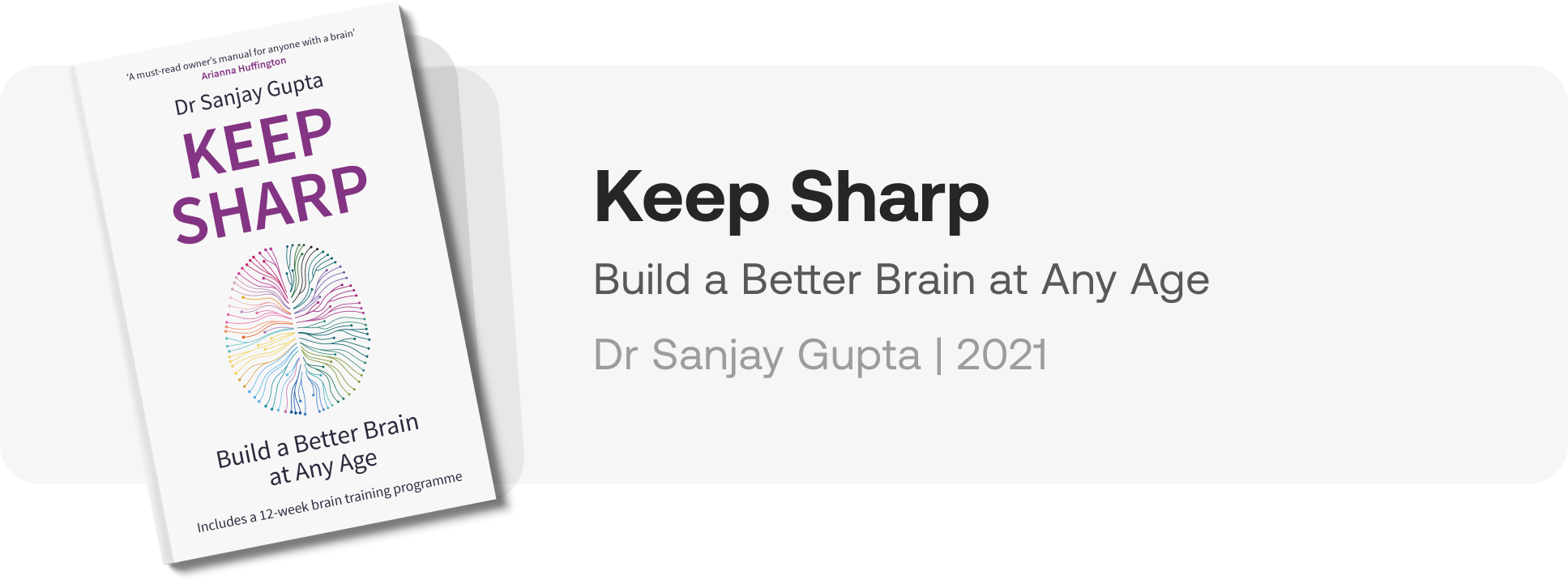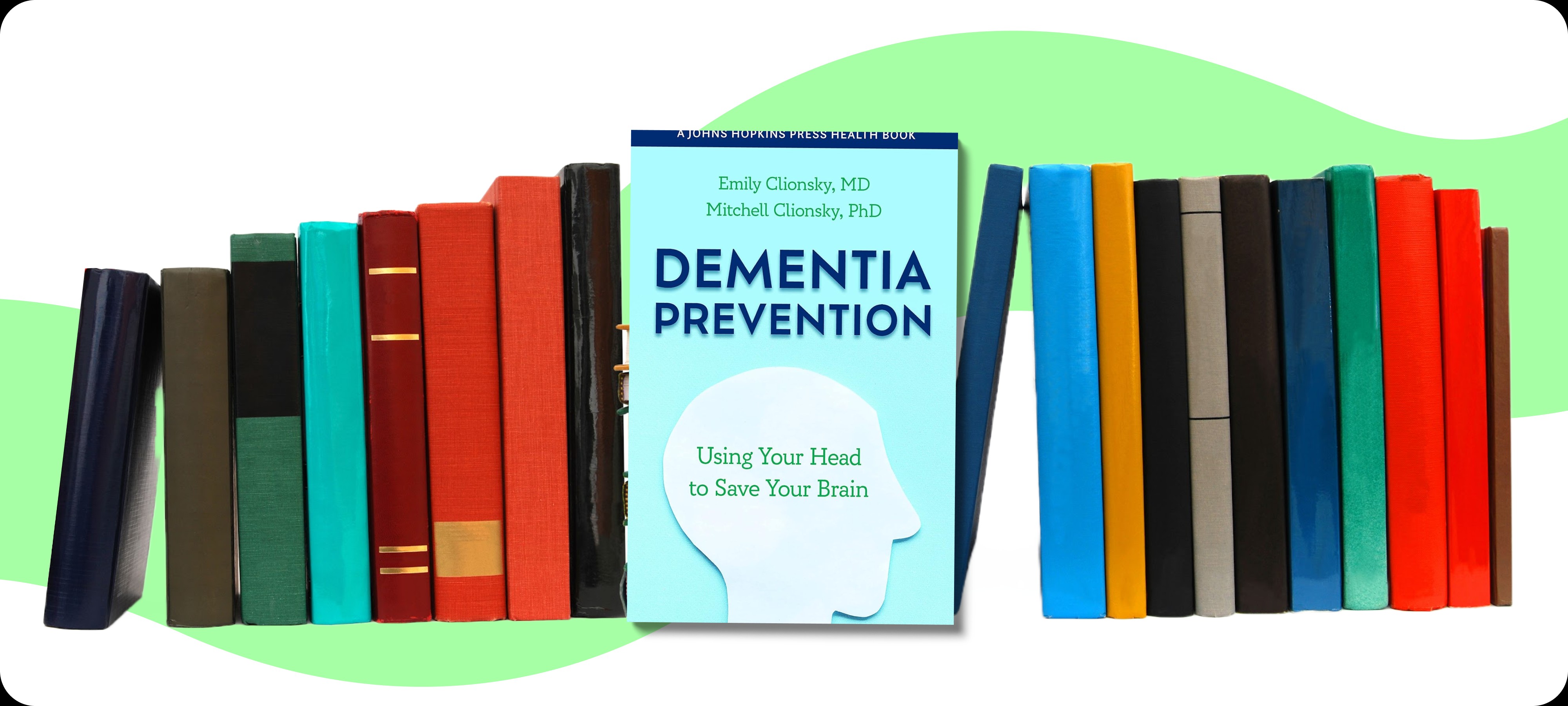The brain is an incredibly complex and powerful organ, but it is also one of the least commonly understood parts of the human body. As a result, there are many myths about cognitive function that persist in popular culture. In this article, we will explore 12 destructive myths about the brain as Dr. Sanjay Gupta, a neurosurgeon, and medical writer, explains in his book ‘Keep Sharp: Build a Better Brain at Any Age’.
Sanjay Gupta is a doctor and writer based in Atlanta, Georgia. He works as associate chief of the neurosurgery service at Grady Memorial Hospital and also has teaching responsibilities as an associate professor of neurosurgery at Emory University School of Medicine. In addition to his clinical work and academic pursuits, Gupta was a host for his own show called Sanjay Gupta MD, for which he has received multiple Emmy Awards.
Separating fact from fiction: 12 myths about the brain

Myth #1: Memory loss is inevitable as we age
While it is true that memory can decline as we age this is not necessarily the case for everyone.
As we age our brain cells die, leading to a deterioration of cognitive abilities. However, aging also has several positives associated with it. For example, you will likely have a more robust vocabulary and be better able to judge character.
Similarly, older people are generally better at managing conflicts than younger people. Therefore, although your memory might decline slightly as you age you will have become stronger in other areas to compensate for this lost function.
Memory loss in older adults may also be caused by a variety of conditions, such as dementia or Alzheimer’s disease. However, with proper lifestyle habits and ongoing mental stimulation many seniors are able to maintain their mental sharpness.
Myth #2: Old age and dementia is a package deal
The brain can undergo significant changes with aging and some adults may develop dementia, but not all. Dementia is caused by a variety of factors including genetics, lifestyle choices, environmental exposures, and underlying medical conditions like hypertension or diabetes.
Despite that age increases the risk for cognitive decline individuals can often take steps to maintain their brain health and reduce their risk for dementia. It is not necessarily something that all elderly people will go through.
Myth #3: Seniors cannot learn new things
This myth is especially damaging because it discourages people from trying to learn new skills or advance their knowledge. The truth is that older adults can and do learn new things all the time.
When our brains age they maintain the ability to form new memories and create new neural pathways. Furthermore, older adults often have more life experience and wisdom than their younger counterparts, which can give them an advantage when it comes to learning. Learning is possible at any age do not let anyone tell you that it is too late for you to learn something new.
Myth #4: You cannot learn two languages at once
Learning multiple languages at once is not impossible. Your brain is capable of learning both without any interference taking place. In fact, many people find it easier to pick up a second language when they already know one. Research also suggests that bilingual children have better grammar skills overall.
Learning several languages at the same time is possible if you have a good plan and determination. The key is to focus on each language separately and practice as much as you can.
Myth #5: You will not forget anything if you train your memory
While memory training can help people significantly improve their ability to remember things, it is not a guarantee that a person will never forget anything. Our memory is much like a muscle in our body. If we do not use it we will lose it. Consequently, even the best memory champions would eventually lose their edge if they stopped practicing. To keep your mind sharp as you age experts suggest continuous training for your brain.
Memory training helps individuals learn strategies to better organize and recall information. However, every individual has different skill levels and natural abilities when it comes to memory retention. Therefore, some may find the techniques more beneficial than others.
Myth #6: We only use 10% of our brains
This is perhaps the most well-known and persistent myth about the brain. People believe that we only use a small portion of our brains and that we have untapped potential if we can access the other 90%. However, this is simply not true. In reality, we use all parts of our brain, and different parts of the brain are active at different times.
Dr. Gupta argues that it is evolutionarily ridiculous for our brain to hold back 90% of its potential. He goes on to say that brains are demanding organs, requiring a lot of energy to build and maintain. Therefore, it would not make sense from an evolutionary standpoint to carry around extra tissue that is not being used.

Myth #7: Differences in male and female brains affect intelligence
The notion that male and female brains differ when it comes to intelligence is wrong. While there are some differences in the way men and women’s brains are structured, these have not been proven to influence overall intelligence.
In fact, research has shown that most of the cognitive differences between men and women result from environmental influences, such as access to education or differences in expectations from society.
Furthermore, studies have also shown that when women are given equal opportunities to access the same educational resources and experiences as men, their performance on cognitive tests is equivalent. We all have unique capabilities and potential regardless of gender.
Myth #8: Crossword puzzles will protect your brain health
Though crossword puzzles can be fun to do and a good way to train your vocabulary, they are not going to fix any underlying medical conditions. Crosswords only work the word-finding section of your brain. If you want to keep your mind sharp, you should do other activities that engage more sections of your brain. Research does suggest an active mind can help reduce cognitive decline.
Myth #9: You are either left-brained or right-brained
Another common myth is that people are either left-brained or right-brained and that this determines their personality or cognitive abilities. Some people even claim that left-brained individuals are more logical and analytical, while right-brained individuals are more creative and artistic.
However, this idea has no basis in science. Although your brain is composed of two hemispheres, recent studies suggest that both halves always work together.
Myth #10: We only have five senses
Although five senses are typically recited, Dr. Gupta reminds us there are six more. In addition to sight, smell, taste, hearing, and touch, there are other senses such as:
Proprioception – body awareness
Equilibrioception – balance perception
Nociception – the ability to detect pain
Thermoreception – heat/cold sensation
Chronoception – the ability to tell time
Interception – a sense of your needs (like thirst or hunger)
Therefore, humans have far more than five senses and that many of these senses are essential for everyday life.
Myth #11: Brain cells damage is irreversible
Scientists previously believed that we were born with a fixed number of neurons and that this number only changed as we aged and damaged them. However, recent research suggests that our brain is plastic, meaning it can continue to develop new neurons and connections between them. This means that our brains can be changed for better or worse through behaviours and ways of thinking.
For example, negative plasticity leads to changes in neural connections that can be harmful. Constant worrying and negativity breed thoughts that then promote changes in the brain associated with depression and anxiety.
However, what many people do not know is that thinking positively has just as much of an effect. Positivity creates position changes in your brain for the better.
Myth #12: The human brain is still a mystery
Many people believe that the brain is such a mysterious organ that it is impossible to understand how it works. This simply is not true. While the inner workings of the brain are still being studied and explored, significant progress has been made in understanding how its structure and chemistry work together to create thought, emotion, behaviour, and decision-making.
Scientists have identified several brain regions and how they interact with each other. This knowledge has been used to develop treatments for a range of psychological illnesses, such as depression, anxiety, and schizophrenia.
Furthermore, advances in technology have enabled researchers to gain insight into the functioning of the brain, such as how it processes information and store memories. Researchers are continually learning more about its inner workings and we can only expect our knowledge to grow even more in the future.
Fun & Interesting facts about the brain
The brain is the fattiest organ in the body, consisting of about 60% fat.
The brain can produce enough electricity to power a small light bulb.
The brain can survive for several minutes without oxygen, however this can lead to permanent damage
The brain can generate its own painkillers, known as endorphins.
The myths about our brain. Let’s sum up

Understanding how the brain works can help us maintain cognitive functions and support healthy aging. It is important to leave the misconceptions behind, especially those that discourage our education and social activities.
The human brain is not divided into logic or creativity sides and is not limited by 10% usage. It has the same intellectual abilities regardless of gender and can be influenced by regular memory practice or through ways of thinking. Dementia is not inevitable and cognitive decline should not be perceived as an inevitable destination for seniors. With the right mindset, you can keep the bossy organ healthy and sharp for a long time.
Hungry for knowledge? Here is more:
If you’re ready for a deep dive, we recommend you reading ‘Keep Sharp: Build a Better Brain at Any Age’. Dr Gupta’s book gives simple and engaging explanation of complex processes that happening in your body and head which help to prevent your mind from ageing.

In this short video, Dr. Sanjay Gupta himself explains how the brain can become stronger, sharper, and more efficient even as you age.
Receive Exclusive Tips & Weekly Digest – subscribe to our newsletter







